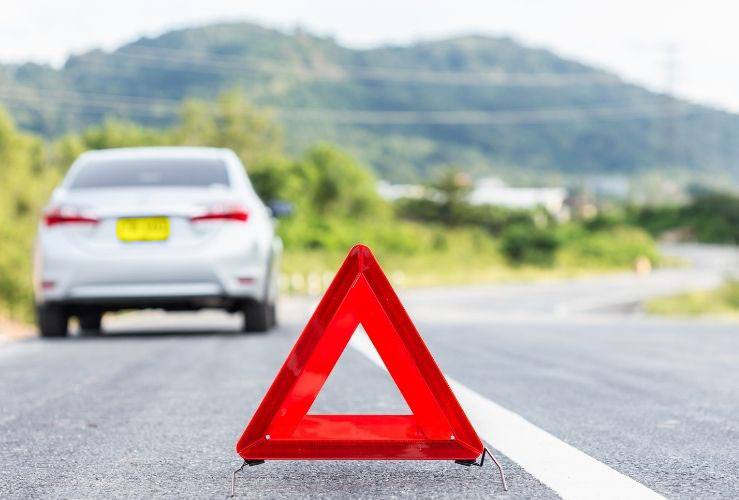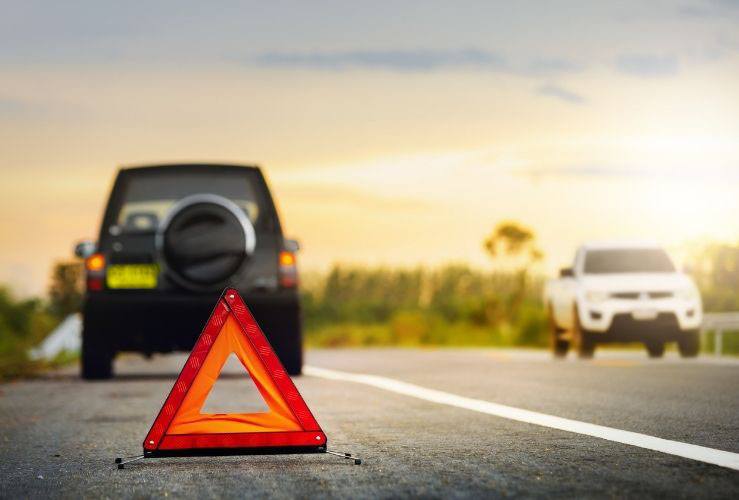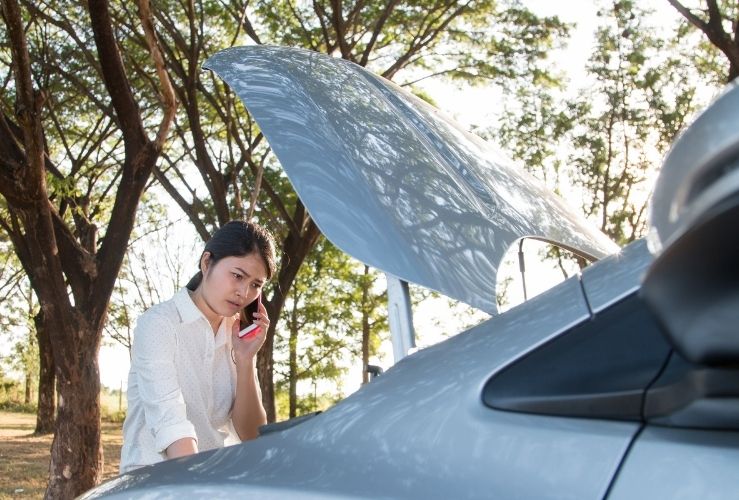Breaking down can be stressful. But staying calm and knowing what to do in the event will help you and your passengers stay safe until help arrives.

What should you do if you break down?
Here are eight essential tips for dealing with a breakdown.
Take action quickly
As soon as you notice a mechanical problem with your vehicle, pull over to the side of the road - assuming it is safe to do so.
It's important to maneuver your vehicle into a safe position before you lose motive power.
If you've broken down in a high speed live lane, contact the Emergency Services on 999 before reporting your breakdown.
Find somewhere safe to stop
If you have a problem with your car, try to stop somewhere safe. Use the hard shoulder if that's the only option. In this case, move as far left as you can and turn the wheels to the left.
Ideally, park away from motorways or busy roads, and avoid bends in the road, or bottoms of hills.
Avoid stopping where you will be difficult to spot by oncoming traffic.
If possible, stop at a service station.
Use an emergency refuge area (ERA) if there is one
An emergency refuge area (ERA) is a safe area on a smart motorway. Each is marked with a blue sign with an orange SOS phone icon. An SOS phone will be located here. Use it to contact Highways England (most ERAs are in England), and a representative will tell you what to do next.
ERAs should only be used if you break down or have an accident. They are not for taking a toilet break, making a general phone call, or having a rest.
Try to stay calm
If you have broken down, keep calm and encourage others in your vehicle to do the same. Panicking is not conducive to making sensible decisions.
Breaking down is stressful, but you'll be able to get help soon enough.

Warn others you have problems with your vehicle
Turn on hazard lights. If it is dark or foggy, turn on your sidelights too.
If you have a hi-viz jacket, wear that.
Do not place a warning triangle on a motorway hard shoulder. However, if you’ve stopped away from a motorway, you can place a warning triangle near your vehicle - but at least 45m behind it.
Leave the car if it safe to do so
Use the left-hand doors to exit the vehicle and move as far away as you can - behind a safety barrier if there is one.
On a motorway, move up the bank to a position behind the vehicle. Leave any pets in your vehicle, since they may present an extra hazard near a busy road.
Note: you should not exit your vehicle if it is unsafe to do so. If you decide to stay in your vehicle, wear seatbelts and keep the doors locked.
In any instance whereby you do leave your vehicle, stand away from your vehicle in a safe area behind it to ensure that if it does get clipped by another vehicle travelling in the same direction, you aren’t in the danger zone. Do not stand directly behind, beside or in front of your vehicle.

Call for roadside assistance
If you cannot make the necessary repairs yourself, or if it is too dangerous to do so, call for roadside assistance. You should have your roadside recovery membership details at hand. If you do not have a membership you can of course still request help from a roadside recovery service - whether independent or part of a network - like startrescue.co.uk.
Be ready with emergency supplies
Ideally you should have a supply of essentials, including: water, snacks, first aid kit, torch, blankets and a powered-up mobile phone. And as mentioned, you should have the details of a roadside recovery provider in your phone and/or on paper.
Find out more details about items you should have in your car in case of the event of a breakdown or accident.




